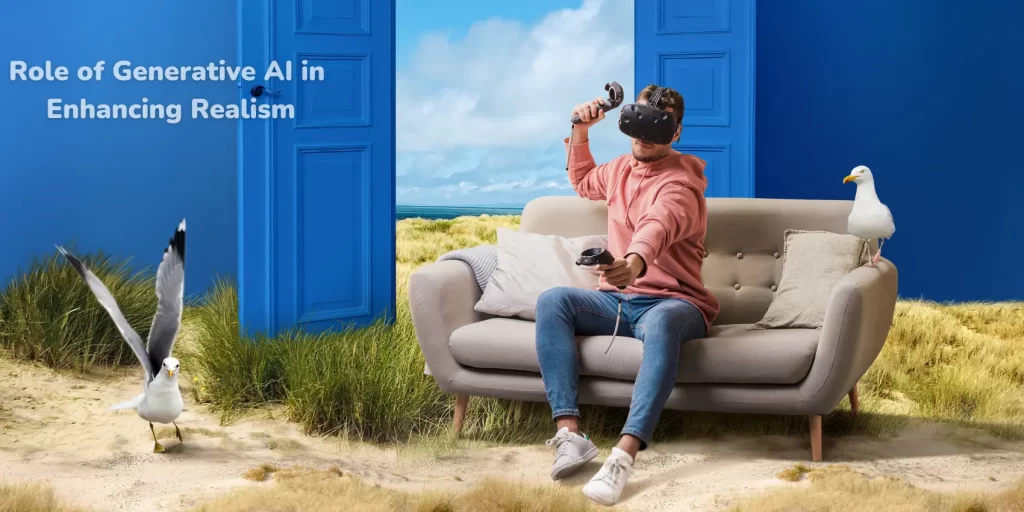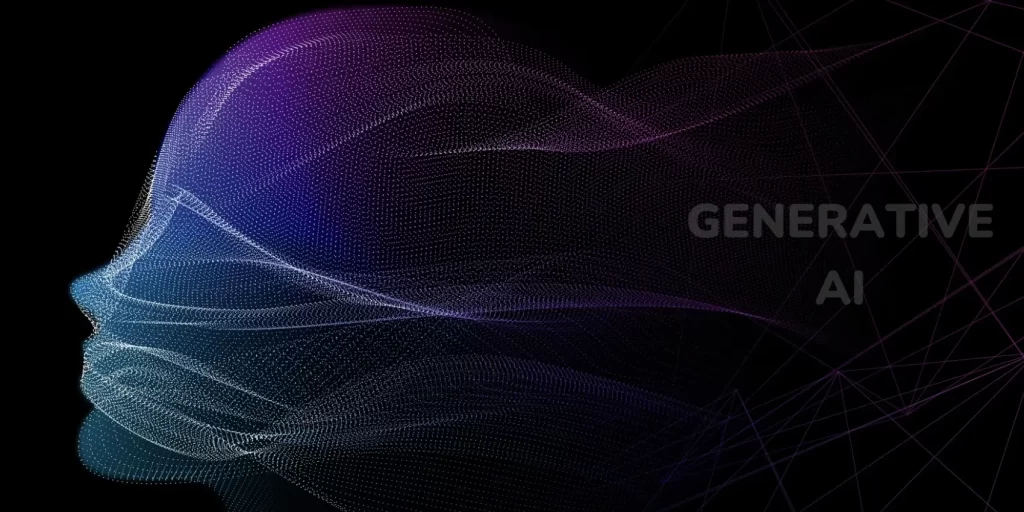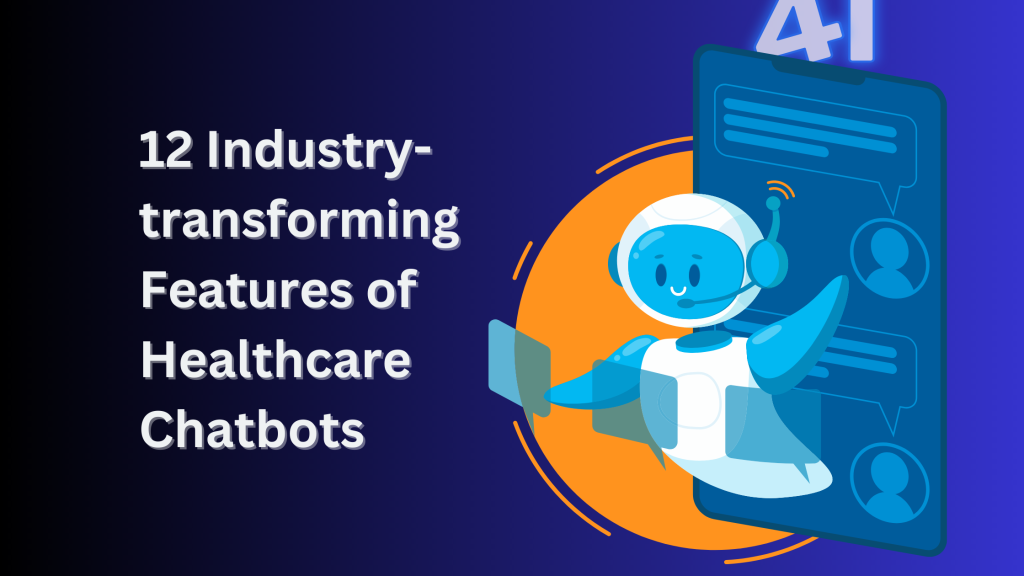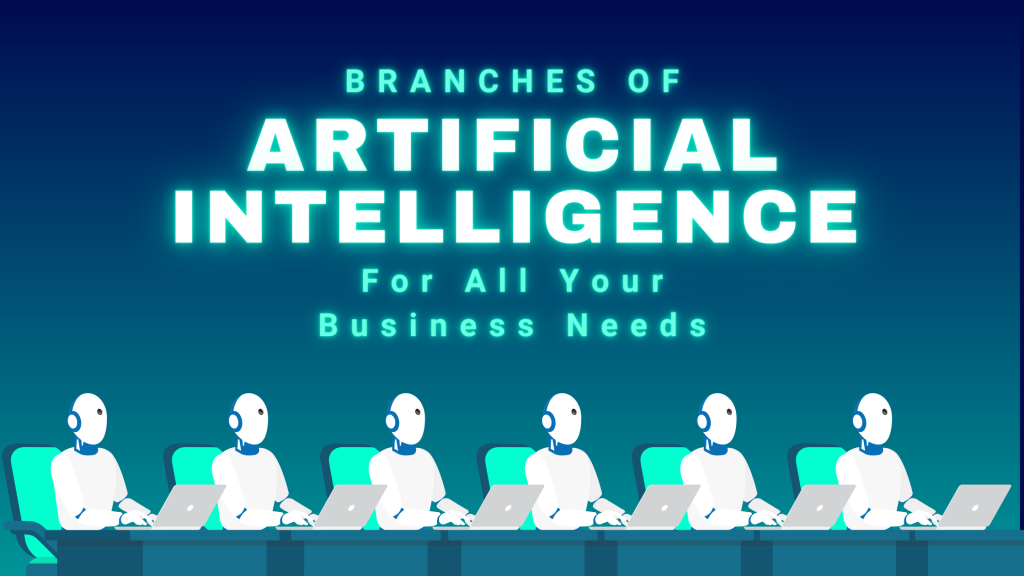Virtual Reality or VR is one of the world-revolutionizing technologies and we are in a time when it is gaining huge traction and expanding its scope rapidly. According to Fortune Business Insights, The global Virtual Reality market size is...
Virtual Reality or VR is one of the world-revolutionizing technologies and we are in a time when it is gaining huge traction and expanding its scope rapidly. According to Fortune Business Insights, The global Virtual Reality market size is projected to grow from USD 16.67 billion in 2022 to USD 227.34 billion by 2029. Thereby, exhibiting a staggering CAGR of 45.2% during the forecast period. Generative AI in VR is going to revolutionize the VR industry and we are here to discuss how.
Virtual reality, often called VR, has emerged as a powerful tool that transports us beyond the confines of our physical world. Through the clever integration of cutting-edge hardware and software, VR immerses users in simulated environments that create a completely new reality. It engages their senses, captivating sight, sound, and even touch, to create an unparalleled interactive experience.
Virtual reality is truly awe-inspiring and its potential for businesses is huge and goes beyond its entertainment value. VR helps entrepreneurs and organizations redefine how they connect with their customers, train their employees, and even design and prototype products. The immersive nature of VR allows businesses to create unique and memorable experiences, leaving a lasting impression on their target audience.
As a result, from healthcare to education, to architecture and gaming, VR is transforming the way we interact, learn, and create. Whether it is to simulate surgical procedures for medical students or design architectural blueprints in a virtual environment, the possibilities are limited only by the vision of business decision-makers.
Moreover, this huge growth potential is further getting a boost in the form of generative AI. This component with bring freshness and realism to the VR experience and make it more engaging for the users.
Generative AI, powered by advanced machine learning algorithms, can generate and manipulate virtual environments in real-time, adding a new layer of interactivity and realism to the VR experience. We will also see how generative AI enhances the immersiveness of VR, enabling businesses to create dynamic and responsive virtual worlds.
Join us on this thrilling journey into the realm of generative AI in virtual reality as we uncover the endless possibilities that await businesses and industries. Prepare to have your mind expanded, your imagination ignited, and your perception of reality forever transformed.
The Rapidly Increasing VR Popularity and Various Industrial Use Cases
As of 2023, there are 65.9 million VR users and 110.1 million VR users in the U.S. Additionally, 75% of companies that implemented large-scale VR and AR technologies saw a 10% increase in operations.
So, on the one hand, the popularity of VR is rapidly increasing among users, on the other hand, businesses that implemented this immersive technology are witnessing enhanced efficiency in their operations.
While users are making the most out of rapidly enhancing headset technology and decreasing prices, businesses are using VR for a range of applications such as training, research, remote collaborations, and much more. The effective potential of VR for businesses is almost unlimited and any task that is done in physical reality can be done in Virtual Reality.
Cost-effective Product Designing and Prototyping
VR is helping product manufacturing businesses save millions of dollars on product design and prototyping. Now manufacturers do not need to spend a fortune in creating physical prototypes and a real-world testing environment.
One renowned example is Boeing which used VR in the manufacturing of its 737 Max 10.
VR allows manufacturers to create every part of the product in 3D, and place them into a digital testing environment while AI infuses real-physical behavior into the product and the environment.
Innovative Marketing and Promotions
Customer engagement is one of the most impactful uses of Virtual Reality that we will witness soon.
Several businesses have already started tapping the huge potential and immersing their audience in a new reality to offer a novel brand experience. This is helping businesses create an atmosphere of goodwill and trust and develop an emotional connection between the brand and the customer.
As a marketing and promotion tool, VR allows businesses to offer immersive product visualization wherein they are placed in a digital environment and use the digital version of the product to understand the product and get a fair idea of its features and functions.
Also, the customers can interact with AI-powered virtual sales representatives of the brand and clear their individualized queries and doubts related to the product in particular and the business in general.
Personalized Customer Service
Further, as a customer service tool, VR helps business enhances their customer relationships by offering quicker and better customer services.
VR tagged with AI addressing the most prominent criticisms regarding customer service while meeting heightened customer expectations.
As per a survey by Gladly, customers prefer a business with more robust and fast problem-solving capability (62%). They want to be treated as humans with genuine concerns and not cases. They also dislike repeating themselves every time on every interaction (62%).
Moreover, they want their concerns to be resolved on a single channel rather than getting redirected to other channels.
On all these fronts, VR helps businesses significantly improve their customer experience. VR allows the audience to interact and share their complaints and grievances regarding the product with a smart AI-backed virtual assistant in VR and offers faster and more effective solutions.
AI will understand users’ concerns through Natural Language Process (NLP) and by analyzing different data collections such as customer behavior, their past experiences, and best practices in customer services, etc., it will resolve issues in a faster, more accurate, and error-free manner.
This will enhance the user experience and build their brand image.
Effective Corporate Training
Virtual reality (VR) is transforming employee training by providing experience-based learning, bridging the gap between training and real-world job requirements.
With VR, trainees learn by actively engaging in virtual environments and practicing tasks relevant to their roles, leading to higher performance, efficiency, and speed.
As per PwC, VR trainees learn four times faster than in classrooms. The immersive nature of VR enhances learning and understanding, with higher retention rates.
Another study by Accenture found that VR training improves accuracy and completion time, with trainees showcasing 12% higher accuracy and 17% faster task completion compared to video instruction participants.
Not only this, but VR also leads to a 275% improvement in workforce confidence regarding the lessons learned and helps reduce staff attrition rates, fostering greater job attachment.
The Importance of Realism in Virtual Reality: Significance and Impact
As we saw in the above section, Virtual reality (VR) has the potential to revolutionize business operations and the technology has been a game-changer in most fields.
The 3D digital environment absorbs used into a different environment and keeps them engaged for longer sessions. As the influence of Virtual Reality expands, the technology is increasingly becoming more refined and believable bringing high-quality realism to life.
Creating realistic experiences in virtual reality (VR) is crucial due to several reasons.
Realistic VR Visuals Enhance Immersion and Engage Deeply
Realistic VR experiences enhance immersion and engage on deeper emotional levels. They make users feel fully present in the virtual environment as it becomes easier for users to get convinced and suspend all looming disbelief around the virtual environment. Therefore, they get more involved in the experience leading to more impactful and memorable experiences.
Then, realistic VR experiences also elicit strong emotional responses. By accurately simulating real-world scenarios through realistic graphics, physics, sound, and interactions, users can feel a greater sense of presence and connection. This heightened level of engagement leads to more profound connections with the virtual content and heightened overall enjoyment.
Realistic VR leads to Highly Effective Learning and Training
Also, realistic VR experiences have immense potential in training and education. They can provide learners with a safe and controlled environment to practice skills and procedures, replicating real-world conditions. By accurately recreating the physical and sensory aspects of these scenarios, VR enables cost-effective, scalable, and immersive training experiences.
Moreover, realistic VR experiences foster empathy and understanding by allowing users to experience different perspectives and situations. By accurately replicating the physical and emotional aspects of these experiences, VR can generate a more profound impact on users’ understanding and attitudes, promoting empathy and broader perspectives.
Realistic VR for High-Quality Visualization for Better Designing and Prototyping
Since realistic VR environments provide designers and engineers with high-quality visualization, they prove to be highly valuable in design and prototyping processes. Users can test their creations in a real-world simulation on a range of settings and achieve a high level of surety before physically building the intended product.
By creating accurate representations of architectural designs, form factors, product prototypes, or virtual software interfaces, designers can evaluate and iterate on their ideas more efficiently, enhancing the overall design process.
The Realistic Gaming Experience that Gamers have always been Dreaming
Lastly, realistic VR experiences significantly enhance entertainment and gaming and take it to a level where it becomes difficult to separate it from reality.
Realistic graphics, physics, and sound effects create a more believable and engaging virtual world. This leads to more captivating storytelling, immersive gameplay, and ultimately a more satisfying gaming experience for users.
One of the finest examples of realistic gaming is the upcoming game Unrecord by DRAMA. The trailer of the game was released in April 2023 and it gained huge attention because of its photorealistic graphic.
Although it is not made for VR as of now but not to mention, VR will make playing the game even more real and we will not be surprised if gamers forget that this is just a game and not their actual reality.
Limitations of Traditional VR Graphics in Offering Realism
Traditional VR graphics face limitations that impact the level of realism achieved in VR environments. Challenges include hardware limitations, processing power, content optimization, and software optimization.
Overcoming these limitations and challenges requires advancements in hardware technology, improved software optimization techniques, and a balance between visual quality and performance to create more realistic and immersive VR experiences.
Challenges in Achieving High Levels of Realism in VR Environments:
Hardware Limitations:
VR requires powerful hardware to render and display realistic graphics. High-resolution displays, fast processors, and robust graphics cards are necessary to generate detailed and immersive visuals. However, the current state of hardware technology may not always meet the demands of rendering highly realistic scenes in real-time.
Further, VR headsets have limitations regarding display resolution and pixel density. Higher resolutions and pixel densities are crucial for delivering crisp and realistic visuals. However, the current generation of VR headsets often faces limitations in achieving the same level of visual fidelity as traditional monitors or displays.
Processing Power and Latency:
VR requires significant computational power to render complex 3D environments in real-time. The demand for processing power increases as the level of detail, realism, and interactivity in the VR environment grows. The limitations of processing power can result in reduced frame rates, lower visual quality, and compromised immersion. To overcome this limitation, hardware advancements, such as more powerful CPUs and GPUs, are needed to handle the rendering demands of high-fidelity VR experiences.
Latency refers to the delay between a user’s action or movement and the corresponding response in the VR environment. High latency can cause a noticeable lag between the user’s input and the system’s response, leading to a disconnected and less immersive experience. Achieving low latency is crucial for maintaining the sense of presence in VR. This requires efficient data processing, optimized communication between hardware components, and minimizing delays in rendering and input processing.
Software Optimization:
Software optimization plays a critical role in maximizing the efficiency of VR applications. VR software needs to be finely tuned to minimize computational overhead and prioritize essential processes, such as rendering, physics simulations, and audio processing.
Efficient coding practices, intelligent resource allocation, and streamlined algorithms are crucial for optimizing software performance. Software optimization helps in achieving smooth and responsive VR experiences while making the most of available processing power.
However, striking a balance between realism and performance can be complex and requires continuous improvement.
Generative AI in VR: The Perfect Way to Realism

Generative AI (GAI) has a lot of potential in addressing the challenges related to traditional VR graphics.
To explain, Generative AI creates new content, such as images, text, music, or even videos by analyzing and learning from existing data. GAI uses the attained knowledge to generate original content as per the input provided by the user.
Unlike other types of AI, Generative AI does not focus on tasks like classification, recommendation, or prediction. It uses algorithms like generative adversarial networks (GANs), Variational Autoencoders (VAEs), or Deep Convolutional Networks (DCGANs) to create and manipulate content.
Generative Adversarial Network (GAN)
To explain in short, GAN is a type of deep learning model that trains two neural networks simultaneously by pitching them against each other. This results in generating realistic images.
While one of the networks, known as the generator, creates random images by following the instructions from the user. On the flip side, the other network termed as discriminator, assesses the realism of the generated image by evaluating it with the help of real-world data it has access to and sends feedback to the generator on whether the image is what the user is looking for or not.
The two networks continue to exchange the output and feedback until the generator creates a realistic image that fools the discriminator.
Variational Autoencoders
Variational Autoencoders (VAEs) are a type of computer program that can learn patterns in data and create new examples that look similar. They work by compressing the data into a simplified representation and then using that representation to recreate the original data.
To explain, VAEs, consist of an encoder and a decoder. The encoder takes in the input data and compresses it into a lower-dimensional representation called the latent space or latent variables.
Then, the decoder takes samples from the latent space and reconstructs the original input data. Both the encoder and decoder learn from each other feedback leading to better outputs over time.
VAEs can be useful for tasks like generating new images or compressing large amounts of data.
Deep Convolutional Networks (DCGANs)
Deep Convolutional Networks (DCGANs) are computer programs that learn how to create realistic images. They look at a lot of example images and learn the patterns and shapes that make an image look real. Then, they use that knowledge to generate new images that look similar to the ones they learned from.
The process is similar to how an artist might learn to paint by studying many different pictures. Once the DCGAN has learned enough, it can take random shapes and turn them into detailed images that look like they could be real.
DCGANs have been used to create lifelike images of all kinds, from landscapes to people to everyday objects. They have become a powerful tool in fields like art, design, and entertainment.
Let’s see the application of Generative AI in VR and how it overcomes the above-discussed challenges to present us with realistic graphics.
Application of Generative AI in VR
Generative AI refers to the use of artificial intelligence techniques, particularly generative models, to create new content such as images, videos, audio, and text. When combined with virtual reality (VR) technology, generative AI can enhance the immersive experience and offer a range of exciting applications. Here are a few examples:
Virtual Environments, Character, and Object Generation:
Generative AI can be used to create realistic and diverse virtual environments in VR. By training generative models on large datasets of real-world scenes, AI algorithms can generate new environments with different layouts, landscapes, and architectural styles. This enables developers to create immersive VR experiences without manually designing every aspect of the virtual world.
Further, Generative AI can be used to create lifelike characters and objects in VR. By training models on extensive datasets of 3D models, textures, and animations, AI algorithms can generate new characters, creatures, and objects with diverse appearances and behaviors. This helps in populating virtual worlds with rich and interactive content.
Procedural Generation:
Generative AI can enable procedural generation techniques in VR, allowing for dynamic and infinite content creation. By employing algorithms that generate content based on predefined rules or parameters, developers can create endless variations of landscapes, levels, and objects in real time. This leads to more interactive and engaging VR experiences. We will discuss it in the next section to see how it helps in overcoming challenges faced by traditional VR experience creation and leads to hyper-realistic immersive environments.
Audio Synthesis:
Generative AI helps in audio synthesis in VR. It generates realistic sound effects, music, and speech in real time, matching the virtual environment and the user’s actions. This contributes to a more immersive and engaging VR experience.
Behavioral Simulation:
Generative AI simulates realistic and intelligent behaviors of virtual entities in VR such as virtual characters or NPCs (non-player characters). AI enhances the fidelity of these virtual entities and makes them exhibit more natural movements, reactions, and decision-making. This enhances the realism and believability of the virtual world.
Generative AI’s Answer to the Challenges of Realism in VR

Content Optimization to Overcome Hardware Limitations:
First and foremost is the technique of content optimization which means Generative AI generates high-quality textures, models, and environments. GAI learns from vast datasets and creates realistic content while optimizing performance on existing hardware. The technology produces complex scenes, objects, and landscapes that look and feel more like the real world.
This means we can have more detailed and visually appealing VR graphics without putting excessive strain on hardware resources. Thereby, leading to more immersive and captivating VR experiences.
Procedural Generation for Hyperreality
Procedural generation is an amazing advantage of Generative AI which aid in creating a hyper-real VR experience with objects and avatar behaving just like their real-world counterpart.
Proeceduration generation refers to the creation of virtual content on-the-fly instead of manually designing every detail. This means AI algorithms keep on generating elements of VR dynamically as users move forward in the experience and explores the virtual environment.
This approach has several advantages for VR experiences. First, the AI algorithms generate the content in real-time, providing a seemingly infinite variety of environments for users to explore, bringing an element of unpredictability and freshness to VR experiences.
Each playthrough or interaction offers unique environments and encounters, making the experience more exciting, engaging, and immersive.
Also, procedural generation enables efficient use of resources. By generating content on-the-fly, only the necessary elements are created and rendered, reducing storage requirements and optimizing performance. This means VR experiences can be more responsive, immersive, and enjoyable even on hardware with limited capabilities.
And this doesn’t end there, Generative AI can be utilized to create intelligent and responsive virtual characters or NPCs (non-player characters). These AI-driven characters can exhibit realistic behaviors, adapt to user interactions, and offer more immersive and engaging interactions within the virtual environment.
Other Added Advantages of Generative AI for VR Realism
Upscaling and Super-resolution:
Another area where generative AI shines is in upscaling and super-resolution. These techniques enhance the visual quality of VR graphics by analyzing low-resolution images or textures and generating higher-resolution versions with more details. This means we can achieve sharper and more detailed visuals in VR, improving the overall immersive experience.
By leveraging the power of generative AI alongside other advancements, we can push the boundaries of VR graphics and create even more captivating and realistic virtual experiences.
Real-time Adaptation:
Generative AI models adapt and respond to user interactions in real time over and above the procedural generation we discussed above. This means while generating the content on the go, the Generative AI also keeps users’ behavior as well as real-world settings in consideration and makes dynamic modifications to the virtual environment based on user preferences, actions, or environmental conditions.
For example, AI can adjust lighting, weather, or object behavior in response to user input, creating a more personalized and interactive VR experience.
Processing Power and Latency:
AI can assist in optimizing rendering techniques and improving performance by dynamically adjusting settings based on the scene complexity and user interactions. However, achieving real-time, highly detailed, and realistic graphics with minimal latency still relies on the computational power of the hardware.
User-generated Content:
Generative AI allows users to contribute their own content to VR environments. Users can use AI-powered tools to create and customize virtual objects, characters, or environments. This fosters creativity and user engagement, allowing for collaborative and interactive VR experiences.
Generative AI outsmarts traditional graphic rendering: The difference is in the approach
Generative AI techniques involve learning from data to generate content adaptively on-the-fly. This leads to producing diverse and realistic outputs that keep the interest of the user alive.
Generative AI differs from traditional graphics rendering by leveraging data-driven approaches, learning from examples, and providing dynamic and interactive content generation capabilities. These advancements open up new possibilities in content creation, data augmentation, and immersive experiences in various fields, including VR as well as its sister technology AR.
Data-Driven Meticulous Approach of Generative AI for Hyperrealistic VR Experiences
Generative AI techniques learn patterns and generate content based on large datasets, whereas traditional graphics rendering relies on predefined rules and algorithms. Due to its meticulous approach, Generative AI captures intricate details and variations that may be challenging to achieve manually.
Generative AI brings Adaptability and Variation to the VR Content
Generative AI produces diverse and novel outputs by sampling from learned distributions, allowing for unique content generation in real time. This is clearly missing in the traditional graphic rendering approach as the content is produced only once and the same is used repeatedly until updated manually.
Similarly, Generative AI can learn from existing data to generate new content, while traditional graphics rendering often requires explicit modeling and specification of geometric shapes, textures, and lighting.
Generative AI for Realistic Details and Textures in VR environments
Generative AI techniques, such as GANs, excel at capturing realistic details and textures by learning from a vast amount of data. Traditional graphics rendering may require manual input and artistic expertise to achieve similar levels of realism.
3 Powerful Real-world Examples Testifying the Great Possibility of Generative AI in VR
Roblox using Generative AI: Faster and Easier User Content Creation
This leading metaverse platform is home to 58.8 million daily users worldwide, is seeking to leverage Generative AI.
It facilities user-generated 3D immersive experiences by allowing users to use Roblox Studio. Roblox is set to augment the studio with Generative AI and revolutionize content creation on the platform.
This will help the user overcome their shortcomings and create content quickly and easily, thereby, dramatically accelerating the development process and improving the resulting content quality.
Generative AI will learn underlying patterns and structures to produce various forms of media, such as images, audio, code, text, and 3D models. It will help users-creators to overcome limitations in their skill sets, allowing them to focus on their strengths while the AI takes care of the rest.
For example, the user-creators who know how to code but do not know 3D modeling can as AI to create 3D models for them. A ground-breaking move for sure.
NVIDIA using Generative AI on Multiple Fronts
NVIDIA, the American multinational is using Generative AI to make its 3D virtual world more realistic and engaging.
First, NVIDIA has integrated OpenAI’s ChatGPT to help NVIDIA OmniVerse users generate 3D models and 3D environments.
Second, They will also use generative AI to make NPCs more intelligent. The Generative AI will improve NPCs’ conversational skills, infuse them with persistent personalities that evolve over time, and enables them to respond dynamically for meaningful full in-game interactions.
They broke the news at COMPUTEX 2023, wherein they announced how NVIDIA Avatar Cloud Engine (ACE), a custom AI model foundry service, will enhance gaming by bringing AI-powered smart NPCs for natural language interactions.
Lastly, At Consumer Electronics Show (CES) 2023. NVIDIA presented how generative AI technologies will be used in their Omniverse to help create virtual worlds faster and easier.
Unity Creating Generative AI Marketplace for VR Gaming Creation
CEO John Riccitiello of Unity Software Inc., the renowned video game development platform, announced a generative AI marketplace for game developers.
This marketplace will offer AI-generated assets including characters, objects, assets, and sound effects. The generative AI technology will instantly create content, reducing the resources and time required.
Also, generative AI will offer personalized scenarios in video games based on player input. CEO Riccitiello also talked about the possibility of game characters having motivation, personality, and objectives generated by AI and will say automatically generated dialogues for an engaging conversation without the help of human writers.
How do Generative AI Algorithms Generate Lifelike Graphics and Textures for VR?
As we saw in the above discussion, Generative AI works by learning from lots of examples and then using that knowledge to generate new ones. They study many pictures and patterns to understand what makes them look real.
Generative AI learns by capturing intricate details, such as color gradients, textures, shapes, and even high-level semantic features, allowing them to generate visually realistic and coherent outputs.
These algorithms can generate all sorts of lifelike graphics and textures, such as realistic faces, natural landscapes, or detailed textures like wood or metal. They are used in various creative fields like gaming, animation, and design to help artists and designers quickly generate new and believable visuals.
The use of generative AI for VR can be understood with an example. If you want a virtual forest in VR, the generative AI algorithms can create realistic-looking trees with the right colors, textures, and shapes. They can also generate detailed textures for the ground, like grass or soil, to make it feel more immersive. All this will be achieved by the algorithm analyzing huge amounts of data to create 3D models of trees in the VR environment.
Generative AI for Creating Realistic Audio Experiences in VR
Generative AI can help create the sounds you hear in a virtual reality (VR) experience. Just like the graphics make you feel like you’re in a different world, the sounds can also transport you to that world.
When you’re in a VR environment, you not only see things but also hear them. For example, if you’re in a VR city, you expect to hear the sounds of cars honking and people talking. Or if you’re in a VR forest, you’d want to hear birds chirping and leaves rustling.
Generative AI algorithms can create these sounds for you. They study different environments, like a busy city or a peaceful forest, and learn what sounds are usually associated with them. Then, using that knowledge, they can generate a whole soundscape that matches the visuals in the VR experience.
They take different audio samples, like recordings of real sounds, and combine and manipulate them to create a realistic audio environment. For instance, they can blend the sound of cars passing by, people talking, and footsteps on the street to make it feel like you’re really in a bustling city.
Similarly, in a serene forest, they can mix the sounds of birds singing, the wind blowing through trees, and leaves crunching under their feet. By combining and manipulating these audio samples, the generative AI algorithms can create a complete audio scene that matches the visuals and enhances the overall VR experience.
In simple terms, generative AI helps create the sounds you hear in VR by learning from real-world examples and generating a mix of sounds that make you feel like you’re truly present in that virtual environment.
The Promising Future of Generative AI in VR: Realistic, Dynamic and Personalized
The future of Generative AI in VR is all about creating more realistic, personalized, and interactive experiences. It will allow for dynamic and diverse content, empower users to be creators, and make VR more accessible to everyone. So get ready for even more exciting and immersive adventures in the virtual world!
More Realistic Environments and Characters: Generative AI will help create even more realistic and immersive VR worlds. It will generate detailed textures, objects, and landscapes that look and feel like the real world, making VR experiences more lifelike.
AI-powered characters in VR will become more intelligent and lifelike. They will exhibit realistic behaviors, respond to your actions, and engage in meaningful interactions, making the VR experience feel more realistic and immersive.
Dynamic and Interactive Content: AI algorithms will dynamically generate content as you explore VR environments, providing endless possibilities and surprises. This means each time you enter a VR experience, it can be different, keeping things fresh and exciting.
Personalized VR Experiences: Generative AI will make VR experiences more personalized to each individual. It will adapt to your preferences, actions, and even your emotions, tailoring the VR environment specifically to you. This will create a more engaging and tailored experience.
On top of it, Generative AI will empower users to become creators in the VR space. It will provide tools for users to generate their own virtual content, such as objects or environments, and share them with others. This will encourage collaboration and enable a vibrant community of user-generated VR content.
As Generative AI algorithms and hardware advance, VR experiences will become more accessible. They will run more smoothly on a wider range of devices, reducing the need for expensive hardware while maintaining high-quality graphics and interactions.
The post Creating Realism in Virtual Reality: The Role of Generative AI in VR appeared first on Queppelin.














